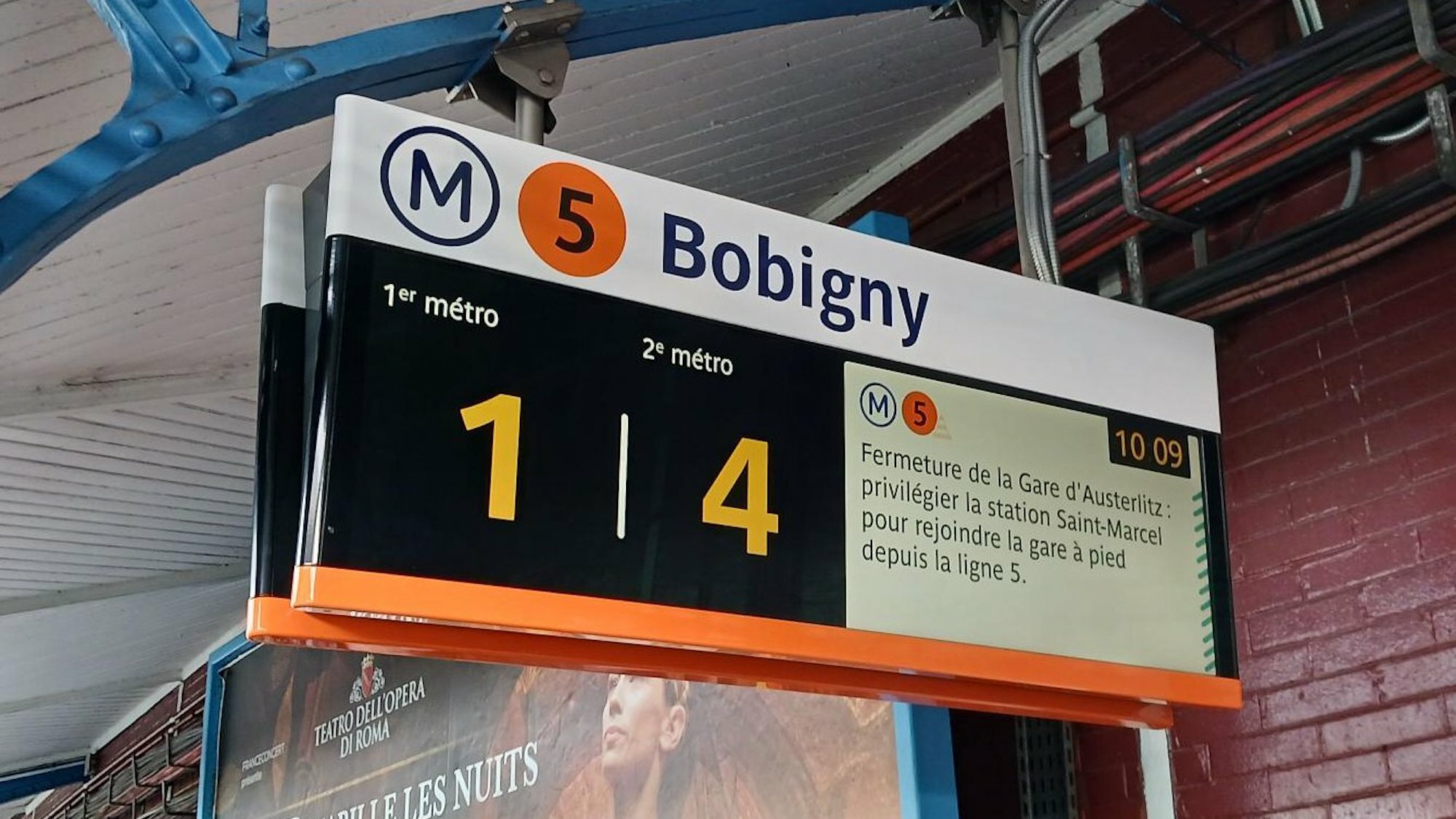[Information voyageur] @IDFmobilites & #RATP déploient dans le métro de nouveaux panneaux d’affichage 100% accessibles, qui indiquent le temps d’attente des deux prochains métros et offrent la possibilité d’afficher de l’information (évènements, perturbations, travaux en cours).
— RATP Group (@RATPgroup) March 20, 2024
A bigger and easier-to-read display
Newness, yes, but no need to panic. Like their predecessors, these new platform signs indicate the wait time for the next two trains, with the added feature of also showing any events, disruptions, or ongoing work as well as the status of the network so that passengers can anticipate any travel difficulties.
In addition to these new features, the signs are also bigger and easier to read, especially for accessibility reasons: increased font size and enhanced color contrast to accommodate visually impaired individuals, improved audio announcements... The old displays with numbers drawn in orange dots were sometimes hard to read, but now, the signs "
📺 Déjà présents sur la @Ligne5_RATP, les nouveaux panneaux d'affichage 100% accessibles viennent améliorer l'information voyageurs sur les #quais du métro 🎉
— IDF Mobilités (@IDFmobilites) March 20, 2024
➡ Encore plus lisibles, ils indiquent le temps d'attente des 2 prochains métros mais diffusent aussi des informations… pic.twitter.com/TRzfQX19Vw
These signs would finally be a little more environmentally friendly than the previous ones, since they can be turned off when traffic is finished, offering slightly lower energy consumption than what we have known so far.
